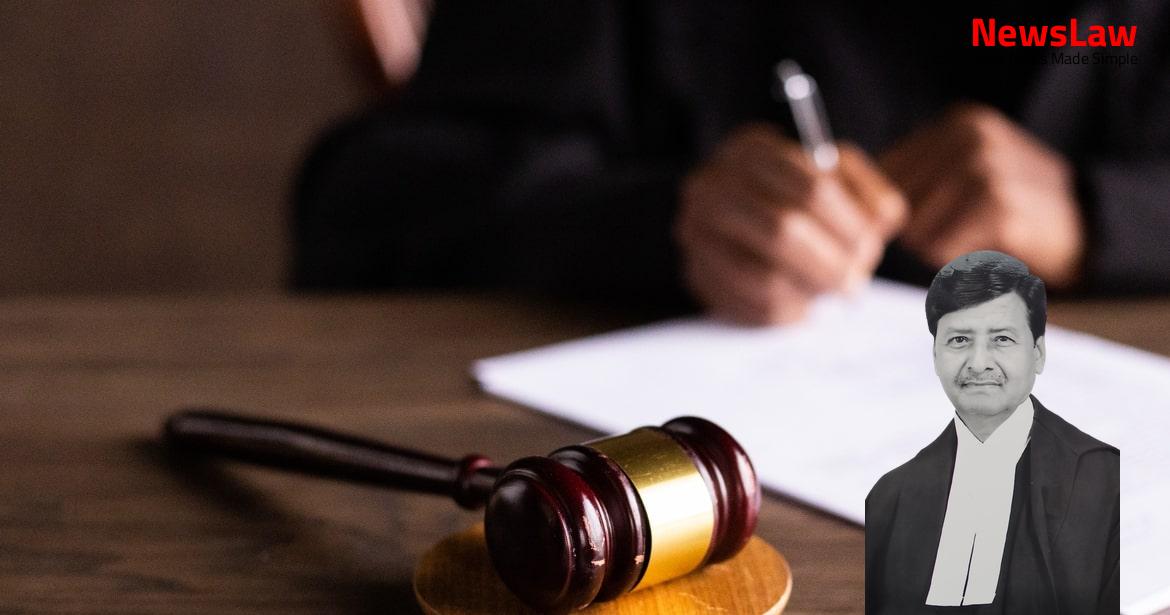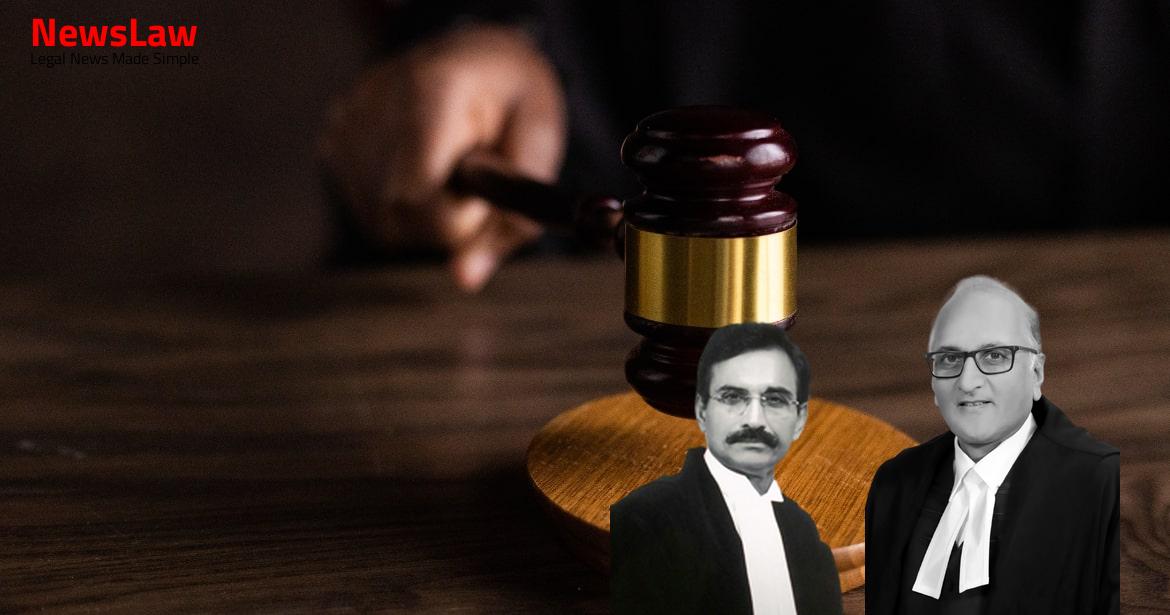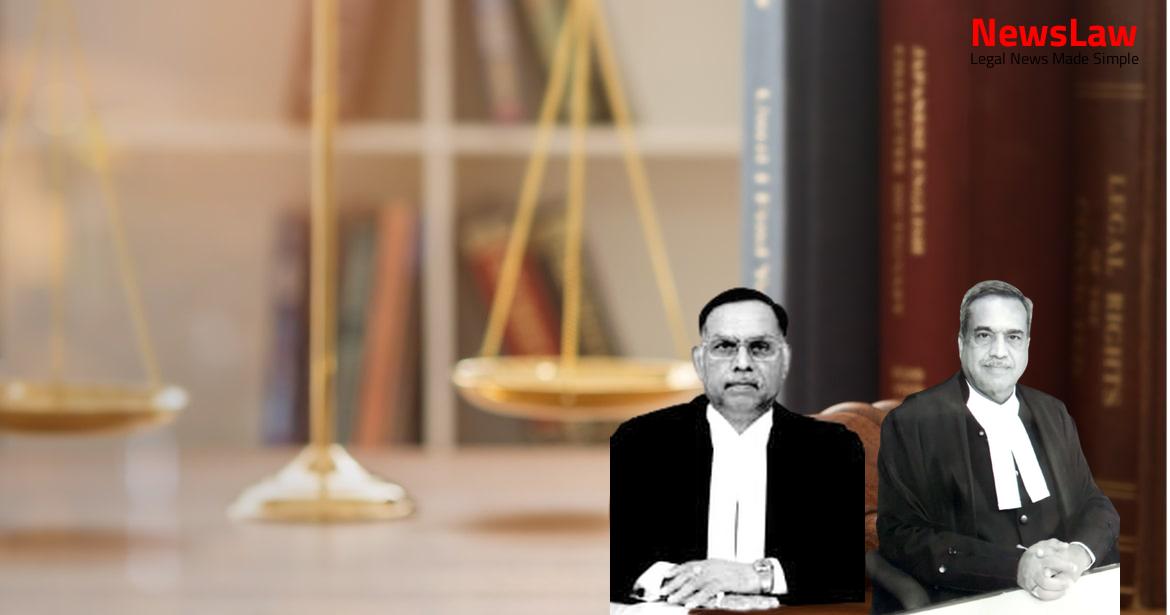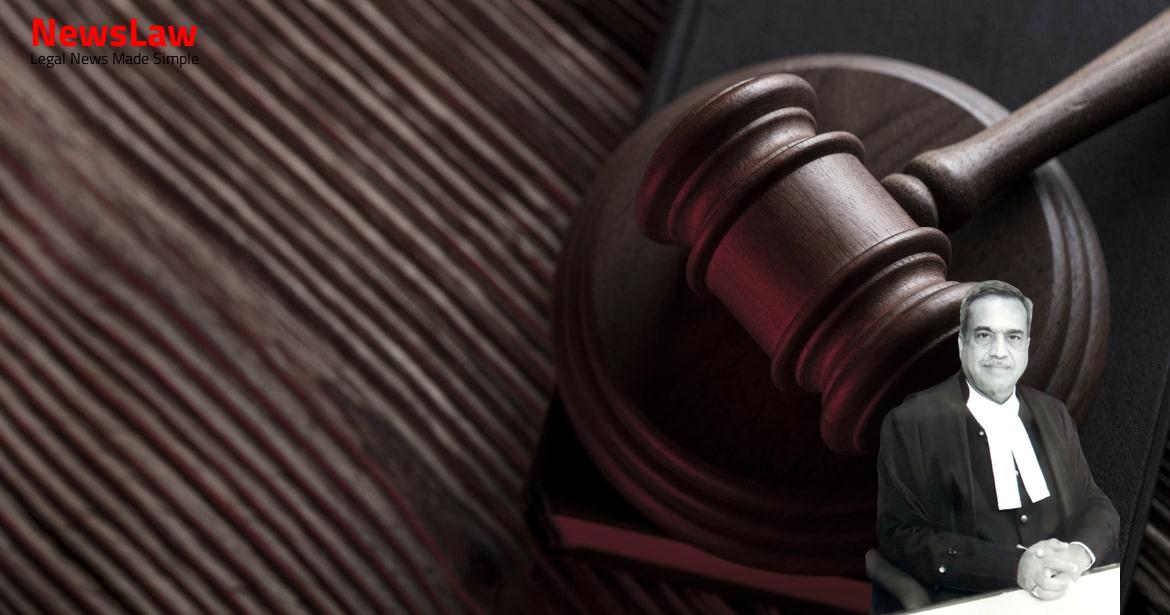In a recent landmark judgement by the Supreme Court Of India, the interpretation of the law in a contentious dispute involving a landlord, a bank, and a tenant was provided. The case sheds light on key legal principles and highlights the intricate legal framework governing such disputes. Stay tuned to learn more about the insights offered by the Supreme Court in this significant matter.
Facts
- The appellant, a protected tenant under the Maharashtra Rent Control Act, had been in occupation of the tenanted premises since October 2005.
- The Magistrate passed an order for eviction without giving the tenant an opportunity of hearing under SARFAESI proceedings.
- A non-encumbrance certificate was given to the bank at the time of mortgage creation.
- A Demand Notice under Section 13(2) of the SARFAESI Act was issued to the borrower/landlord demanding a substantial loan repayment.
- The bank sought directions under Section 14 of the SARFAESI Act to take physical possession of the secured asset due to loan default.
- The Chief Metropolitan Magistrate rejected the tenant’s application for possession of the secured asset as per the law laid down in a previous case, Harshad Govardhan Case.
- The Small Causes Court granted interim injunction preventing the disturbance of tenant’s possession by the borrower/landlord.
- The appellant claimed to have been a tenant since January 2000, paying rent and disputing the eviction notice received from the borrower/landlord.
- The appeal arose from the Chief Metropolitan Magistrate’s order rejecting the tenant’s application to stay the possession order under the SARFAESI Act for the property in question, a residential flat in Mumbai.
Arguments
- The appellant is accused of colluding with the borrower/landlord to defraud the bank.
- It is claimed that the appellant was not a legitimate tenant but was involved in a scheme to misuse the legal process.
- The bank was allegedly misled into believing that the borrower’s family resided in the secured asset when in fact there was a tenant in place.
- The bank argues that the appellant is not entitled to any equitable relief due to their involvement in the alleged fraudulent activities.
Also Read: CRPF Act: Validity of Rule 27 for Compulsory Retirement – Case of Head Constable vs. CRPF
Analysis
- The appellant-tenant cannot claim protection under interim protection granted ex parte, solely based on xerox of rent receipts.
- The notice under Section 13(2) SARFAESI Act was issued on 30.04.2011, barring subsequent tenancy reckoning.
- Intention of the legislature is to provide for Section 13(13) for debt recovery making SARFAESI Act self-executory.
- An equitable mortgage on the secured asset was created by the borrower/landlord with the bank on 20.05.2000.
- The tenant failed to substantiate their tenancy claim with conclusive evidence.
- The SARFAESI Act overrides the provisions of the Transfer of Property Act.
- Possession of secured asset cannot be held beyond one year after lease creation without a registered instrument.
- The appellant-tenant failed to produce evidence of their claim over the secured asset.
- The Chief Metropolitan Magistrate’s rejection of stay application was justified based on lack of conclusive evidence.
- Tenants entering into oral agreements post-mortgage need the creditor’s consent for any leasehold rights.
- The claim of tenancy has to be supported by concrete evidence like tax receipts and other bills.
- The provisions of this Act override anything inconsistent in any other law.
- Secured creditors can take measures specified under section 13 to recover their debt.
- Debts Recovery Tribunal can review measures taken by secured creditors for enforcement of security.
- If the Tribunal finds measures taken by secured creditors are not in accordance with the Act, it can declare them invalid and restore possession of assets to the borrower.
- Applications to the Tribunal need to be dealt with expeditiously and should be disposed of within sixty days or within four months if extended.
- The Court in Harshad Govardhan Case distinguished between registered and unregistered instruments/oral agreements.
- SARFAESI Act cannot override the Rent Act provisions.
- Landlords cannot indirectly evict tenants through SARFAESI Act.
- Prior existing valid tenancies protect tenants’ rights even in mortgage cases.
- Banks should have conducted due diligence on existing tenancies before accepting a property as mortgage.
- If a tenancy arises after mortgage creation but before Section 13(2) notice under SARFAESI Act, it must meet T.P. Act conditions.
- A tenant claiming possession for more than a year must have a registered instrument.
- Absence of a registered instrument means the tenant cannot possess the secured asset for more than the T.P. Act prescribed period.
- Devious practices to obstruct bank’s legitimate dues realization are not appreciated by the Court.
- Rent Act does not apply to a ‘tenant-in-sufferance’ under SARFAESI Act.
- Right of appeal to the DRT is available for tenants claiming under a borrower.
- DRT can set aside actions of secured creditors and restore status quo ante.
- The court has not interpreted the new amendment or the law in relation to other categories of tenants
- Further analysis of the new amendment and the law may be done in future cases, as deemed appropriate
Also Read: DAMEPL vs. DMRC: Curative Petition and Arbitral Award Restoration
Decision
- The appellant, a tenant, is ordered to hand over possession of the secured asset within 12 weeks of the order.
- Possession is to be handed over to the Assistant Registrar at Bandra Centre of Courts, Mumbai.
- The Assistant Registrar will then deliver the asset to the bank.
- The appeal is dismissed.
Case Title: BAJARANG SHYAMSUNDER AGARWAL Vs. CENTRAL BANK OF INDIA
Case Number: Crl.A. No.-001371-001371 / 2019



